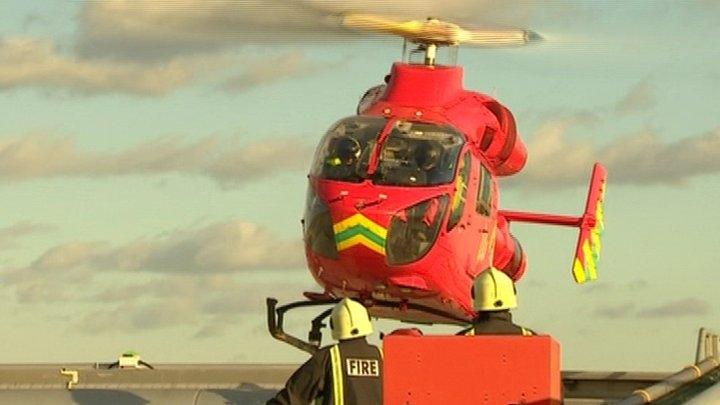NI air ambulance expected to be based on Welsh model
- Published
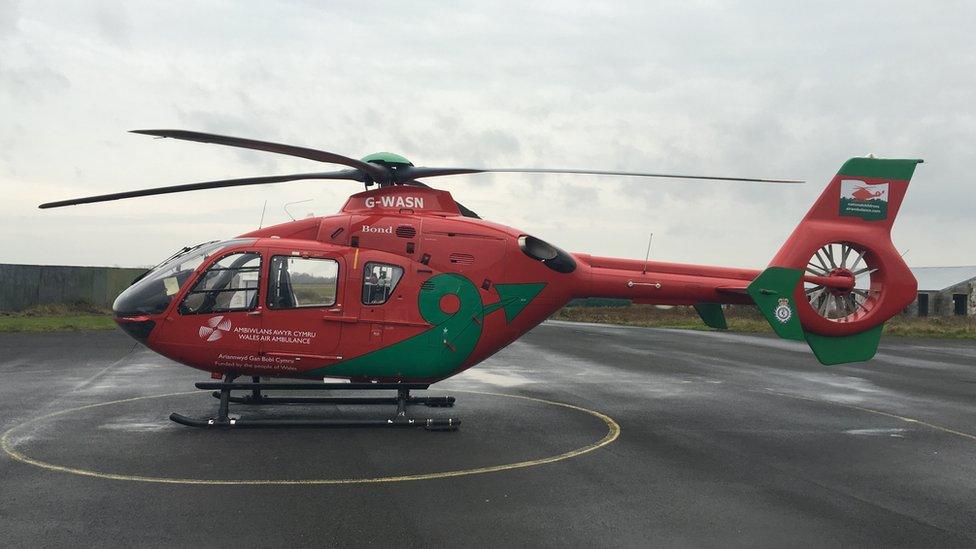
The Welsh air ambulance service has been operating for 15 years
A public consultation on an air ambulance service for Northern Ireland is due to end next month. BBC News NI reporter David Maxwell took a trip on the Welsh air ambulance to see how it operates.
Northern Ireland's new air ambulance service is expected to be closely based on the Welsh model.
The Welsh model has three helicopters and has been operating for 15 years. It is run by a charity but staffed by the NHS.
Northern Ireland is the only region of the UK which does not have a helicopter emergency medical service.
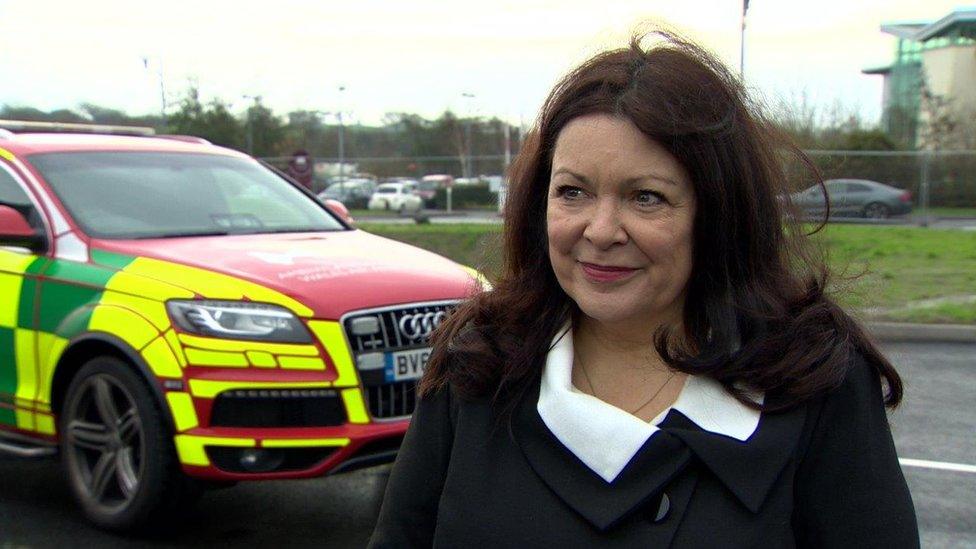
Wales Air Ambulance chief executive Angela Hughes said it has fundamentally changed emergency care provision
The Welsh model differs from that in Scotland, which is almost entirely funded by the government.
Wales Air Ambulance chief executive Angela Hughes said the service has fundamentally changed emergency care provision.
"A bit like Northern Ireland... there's lots of farming land and lots of coast and you could be somewhere where a land ambulance couldn't reach you," she said.
Funding
It costs £6m a year to operate the service in Wales and the money comes from a number of sources.
"We have an awful lot of donated goods. We also have our own in-house lottery," said Ms Hughes.
"We have 18 shops and we have just opened our first café in North Wales so we are thinking we will attach cafes to our shops."
The shiny red helicopters are emblazoned with the tail of a Welsh dragon but there is nothing scary about this dragon - for some it brings salvation from the skies.
Base location
The south Wales helicopter is based at a small, quiet airstrip outside Swansea.
I got on board for a trip to a new hangar and £0.5m headquarters in Dafen near Llanelli.
Low cloud meant we flew low over the terrain in which this helicopter can land; valleys shrouded in mostly abandoned beaches, farmland and city streets - the pilot tells me he can land it more or less anywhere.
Once we gently set down at the new base, service manager Mark Winter explained how they chose the location.
"You have got to think about the radius, you have got to think about the area you are servicing. You have got to think about the weather and what impact that is going to have and also whether it's a rural or urban site."
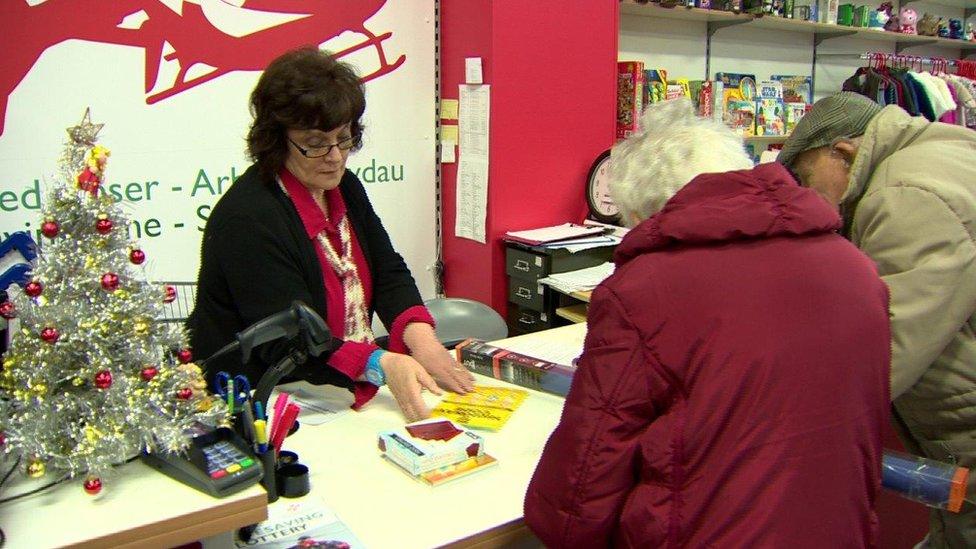
Charity shops help fund the Welsh air ambulance service
The new site in Wales is also close to a major hospital where blood products carried on the helicopter can be sourced.
The three aircraft operating in Wales are strategically based in different areas. It means it is possible to reach most places in the country in about 20 minutes and, between them, they carry out about 2,000 missions a year.
New DUP leader and future first minister Arlene Foster has supported basing an air ambulance in her constituency at the St Angelo airstrip near Enniskillen.
Northern Ireland's Health Minister Simon Hamilton has talked about it in connection with the specialist trauma services at the Royal Victoria Hospital in Belfast.
Given Northern Ireland's relatively small size, wherever it is based, it should be able to get to any location within about 30 minutes.
Paramedic or doctor led?
Wales' air ambulances have mostly been staffed solely by paramedics. In the last six months, however, consultants have been brought on board.
Mr Winter said it has transformed the service.
"With paramedics they take the helicopter to the scene, they pick the patient up and they take them to the hospital," he said.
"There are some interventions and treatments they can give on site but really they have got to get to the hospital with the patient. Where the doctors come in - they take the hospital to the patient."
Consultants recruited for the service in Wales spend two thirds of their time working in hospitals and the other third on the air ambulance.
One consultant, Dr Rhys Thomas, said any service starting in Northern Ireland should have doctors from the outset.
"We carry blood, we carry clotting products, we carry ultrasound devices we have even got blood gas machines so there is no difference in the kit and equipment we have got to what actually you would have in an advanced intensive care unit," Dr Thomas said.
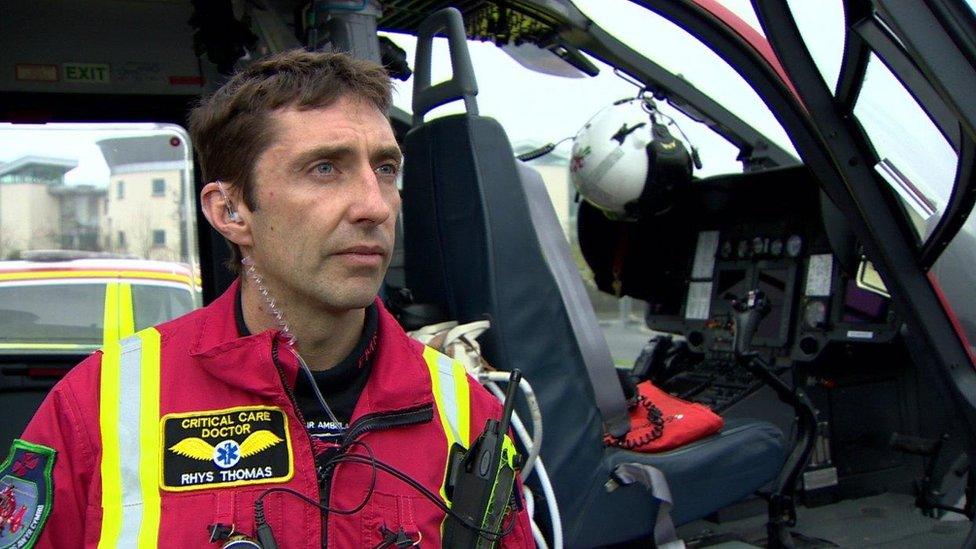
Dr Rhys Thomas works on the air ambulance in Wales
Recruitment
Wales shares the problem Northern Ireland has in recruiting emergency department consultants but Dr Thomas believes giving consultants the opportunity to work on the air ambulance will attract more senior doctors.
"We have an added incentive in that once you put a red shiny helicopter on the job description a lot of people tend to go for it," he said.
These helicopters do have limitations. They cannot fly in very low cloud or freezing weather.
Emergency missions are also generally only carried out during daylight hours so any service is more limited during the winter months.
This means there can be days when paramedics and doctors are assigned to the air ambulance, but can not get off the ground.
Despite this, Mr Hamilton said it is not good enough that Northern Ireland is the only part of the UK with no dedicated air ambulance.
"This has been long overdue - I think there is now an opportunity with the establishment of a major trauma network, building on the success of the new critical care building at the Royal Victoria Hospital, to introduce a new air ambulance for Northern Ireland and make us the last part of the British Isles to have one," he said.
It is estimated that operating one air ambulance helicopter in Northern Ireland would cost about £2m a year.
Mr Hamilton is hopeful the service will be operational by December 2016.
- Published12 October 2015
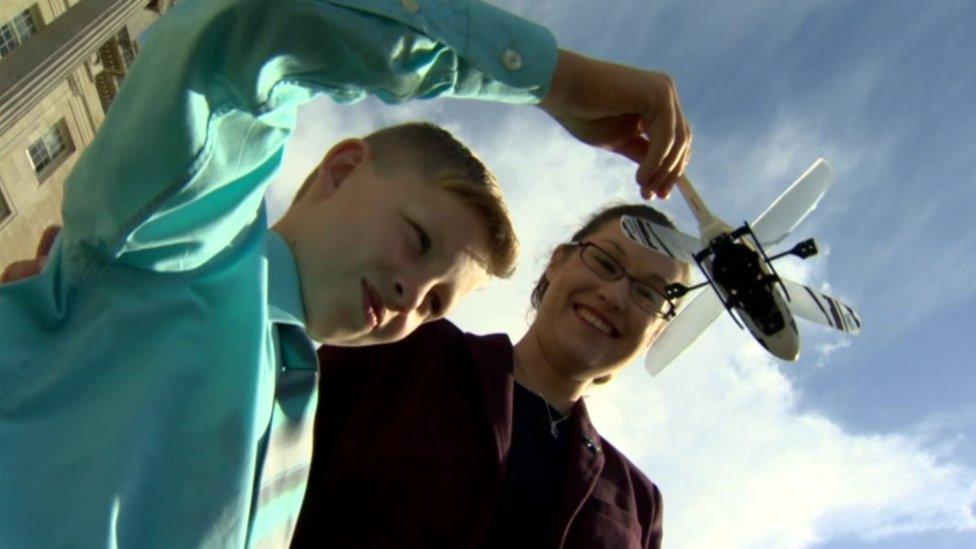
- Published16 June 2015
